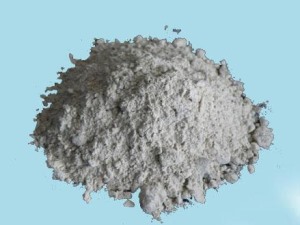- 29
- Oct
Refractory ramming materials are divided into several materials
Refractory ramming materials are divided into several materials
Fire-resistant ramming material refers to the construction of ramming (manual or mechanical). The fire-resistant ramming material is made by mixing particles, powders, separating agents, admixtures with water or other liquids. Classified by material, there are high alumina, clay, magnesia, dolomite, zirconium and silicon carbide-carbon refractory ramming materials.
Refractory ramming material is a bulk material made of silicon carbide, graphite, electric calcined anthracite as raw materials, mixed with a variety of ultrafine powder additives, and fused cement or composite resin as a separating agent. It is used to fill the gap between the furnace cooling equipment and the masonry or the filler for the masonry leveling layer. Refractory ramming material has good chemical stability, erosion resistance, abrasion resistance, peeling resistance, heat shock resistance, and is widely used in metallurgy, building materials, non-ferrous metal smelting, chemical, machinery and other manufacturing industries!
Acidic, neutral, and alkaline refractory ramming materials are commonly used in coreless intermediate frequency furnaces and core induction furnaces. They are used as intermediate frequency furnace refractory ramming materials to condense gray cast iron, ductile iron, forgeable cast iron, vermicular graphite cast iron and Cast iron alloys, condensed carbon steel, alloy steel, high manganese steel, tool steel, heat-resistant steel, stainless steel, condensed aluminum and its alloys, condensed copper alloys such as copper, brass, cupronickel, bronze, etc.
According to different blast furnace types and different material design requirements, carbon refractory ramming materials are mainly used for the gaps between the bottom carbon bricks and the bottom sealing plate, the hearth carbon bricks and the cooling stave, and the bottom water cooling For the leveling above the center line of the pipe and the filling of the cooling stave, some parts require the carbon refractory ramming material after the refractory ramming material to have a certain strength and density, filling every corner and small gaps to achieve no leakage The requirements of molten iron and gas, and the thermal conductivity of the carbon refractory ramming material and the functions of the hot carbon bricks and cooling stave of the blast furnace must be fundamentally different, so as not to affect the life of the blast furnace, so as to maintain the normal production of the blast furnace.
The problem often encountered in the use of carbon refractory ramming materials is that the thermal conductivity of ordinary carbon refractory ramming materials is low, which is not conducive to the rapid cooling of the blast furnace body, thereby affecting the service life. Therefore, the updated research and application of carbon refractory ramming materials with high thermal coefficient have market prospects. Whether it is adding an admixture to the carbon refractory ramming material, the function of the material is changed by the in-situ reaction at high temperature, or the structure of some materials is changed from a design perspective, so that the carbon refractory ramming material layer can reach The thermal conductivity matched with the carbon brick and the cooling stave is to ensure the normal heat conduction without damaging the overall construction structure, so as to meet the requirements of improving the life of the blast furnace.

